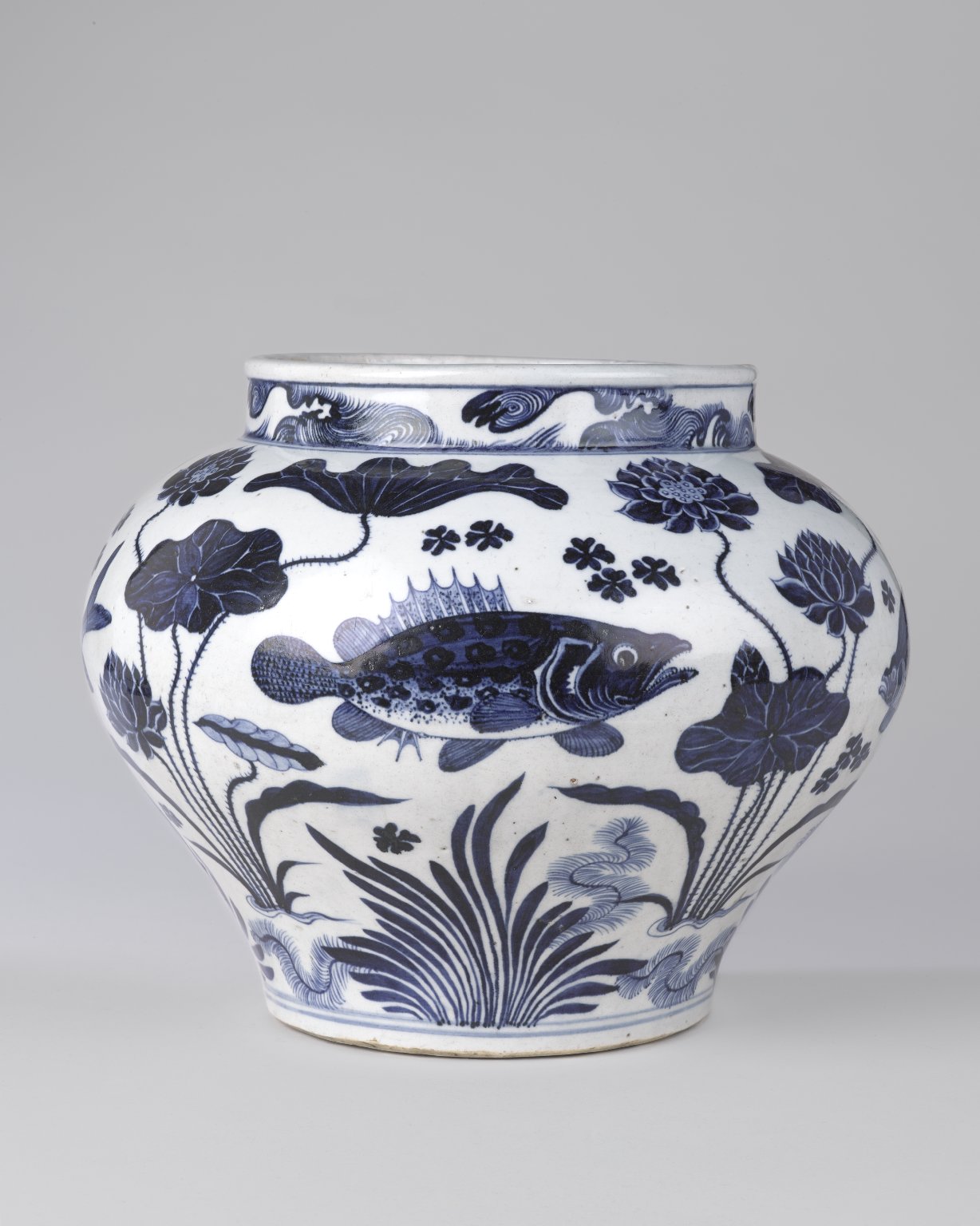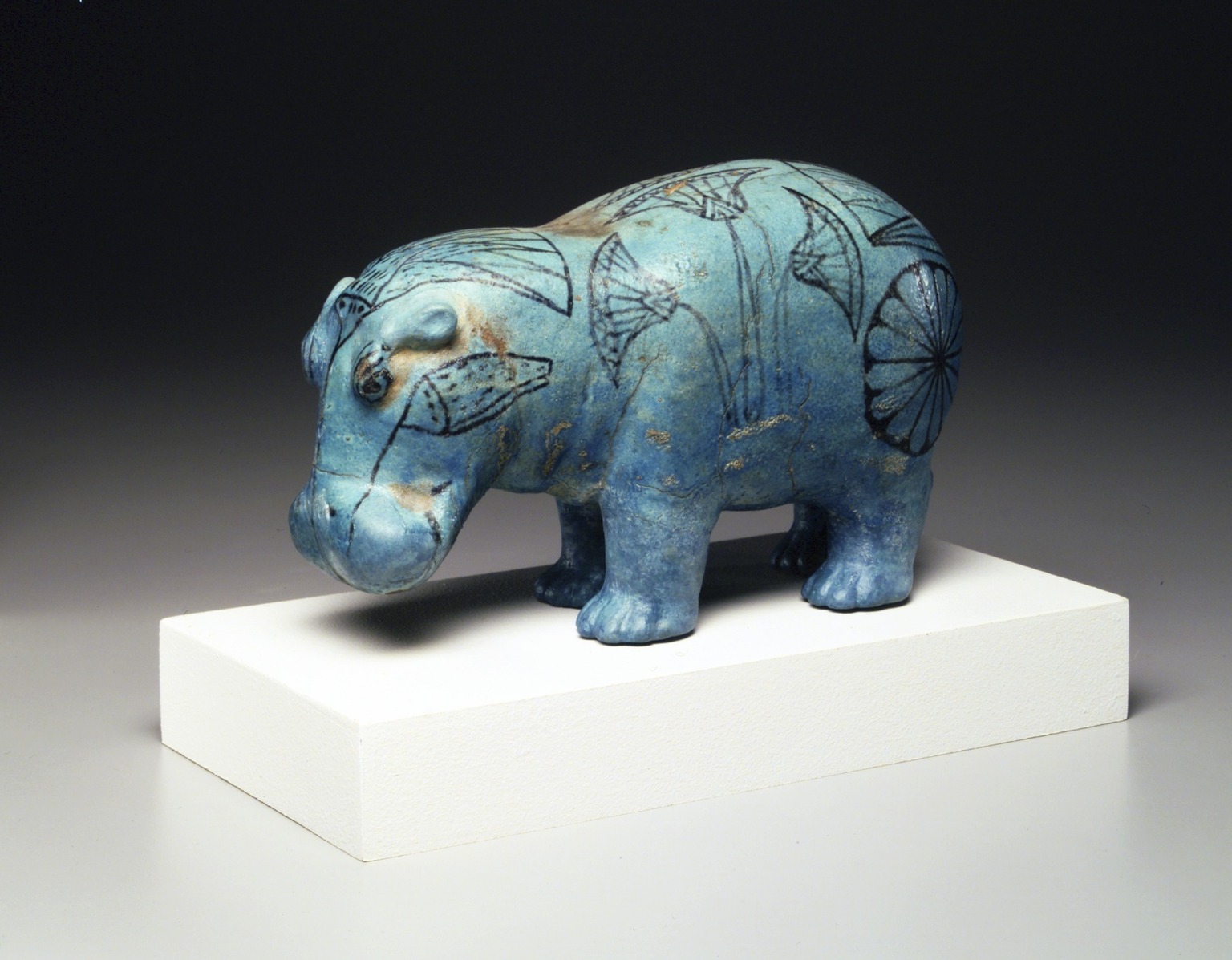
Kids and Families’ Guide to the Brooklyn Museum: Ages 7–11
How to check out six great works at the Museum with kids and tweens.
Welcome to the Brooklyn Museum! As museum educators, we work with children and families of all ages as they learn how to engage with our artworks. In our family guides, we highlight family favorites from our collection alongside Visual Thinking Strategies (VTS) that will encourage your family to look closely, share thoughts, and make personal connections with art.
This guide is recommended for families with children ages 7–11. For the best experience, read the text aloud to children as you approach each artwork. Find your way with our floor directory.
A few tips
Before you start your adventure in the galleries, let’s review a few kid-friendly reminders about the space.
- Walk, don’t run
Use your “inside” feet while moving around the Museum. That way, you’ll keep yourself, others, and the artwork safe. - Look, don’t touch
Please don’t touch the art; we want to make sure it isn’t damaged. - Say cheese!
Only take photos and videos without flash. Selfie sticks are not permitted. - Write it down
Feel free to use pencils in the galleries, but please keep pens and markers stashed.
Let the learning begin
The Brooklyn Museum’s collection is full of amazing artwork from around the world! Below are a few highlights to seek out as you explore.
2nd Floor
Wine Jar with Fish and Aquatic Plants, Arts of Asia
Take a swim around this porcelain jar! There are four types of fish here—mackerel, whitefish, carp, and freshwater. Here are their names in Mandarin Chinese:
Mackerel: Qing Whitefish: Bai Carp: Li Freshwater: Gui
Say It Out Loud
Let’s say them together! When we say all the fishes’ names out loud, it sounds like the phrase “Qing bai lian jie.” In Mandarin, this is a pun that means “honest and incorruptible.” Listen to how it’s pronounced.
Someone likely gave this wine jar to a government official as a gift. Why would they have wanted the official to think about the phrase formed by the fish names?
Mask of Ferocious Bhuta Deity, Arts of Asia
Before we read information about this work, let’s see what we can discover on our own using a strategy we call See, Think, Me, We.
- See: What details do we notice about the artwork? What facial features stand out?
- Think: What thoughts can we form about this work? Does the mask remind you of anything? How do you think it was made?
- Me: When else have you seen a mask in your life? What was it used for?
- We: Based on what we know about masks, how might this example be connected to other masking traditions in the world?
This mask was made in the 1700s in Tulu Nadu, which is in southwest India. It was worn by mediums, members of the community who could communicate with spirits, during a special ceremony called Bhuta Kola. The mediums would perform an electrifying dance to scare away evil from their communities. Ferocious indeed!
3rd Floor
Resurrection of Christ, European Art (South Elevator Lobby)
There’s so much to see in this colorful Italian artwork. Resurrection of Christ is made of 46 pieces covered in intricate details and symbols. Let’s find as many symbols as we can!
Elaboration Game
- Let’s choose one person to identify and describe a section of the artwork.
- Now, let’s choose another person to add to the first person’s observations and identify details in another section.
- We’ll repeat these steps until we’ve described the entire artwork.
Did you find all the symbols? Scroll down to see the full list, and watch the video below to learn more about this work.
Click here to see the answers for the Elaboration Game.
Key to Elaboration Game
Animals and bugs
- Bird
- Dove
- Eagle
- Frog
- Grasshopper
- Lizard
- Rodents
- Snake
- Snail
- Squirrel
Plants, fruits, and vegetables
- Apples
- Cucumber
- Cypress
- Fruit tree
- Gourd
- Grapes
- Lemons
- Palm
- Pine/fir
- Pomegranate
- Zucchini
People and figures
- Angels
- Jesus Christ
- Nicolo Antinori, who commissioned the painting
- Soldiers
Objects
- Crests
- Flag
- Tomb
Standing Hippopotamus, Egyptian, Classical, Ancient Near Eastern Art
Hippos represent the balance of opposites, which were important to the way that ancient Egyptians understood the world. The animals were symbols of fertility and protection because they lived in the life-giving waters of the Nile River and because hippo mothers are very protective of their babies. They were also symbols of danger and chaos. Hippos are the most deadly animals in Africa to this day! They can flip over boats, trample crops, and, if they’re angry enough, open their mouths wide and swallow a person whole.
Ancient Egyptian sculptors made these blue hippo sculptures to place into tombs. The statuettes were believed to harness the creatures’ positive traits, protecting the tomb owner’s soul. But the artist would also break the sculpture’s legs so that the hippo couldn’t come to life and harm the soul on its journey to the afterlife.
Looking: Ten Times Two
- Observe the hippo for 30 seconds, taking in as much as you can.
- Try listing 10 words or phrases that come to mind about the hippo.
- Repeat steps 1 and 2 and try to add 10 more words or phrases to your list.
4th Floor
Sunset in Autumn Woods, Decorative Arts and Design
Look at all the colors as light shines through this window. Designer Louis Comfort Tiffany is known for his stained glass. The images in stained-glass windows illustrate a wide variety of stories, people, and ideas.
Look closely at the window. What do you think it is trying to show? Which details make you say that?
Creative Comparisons
Imagine that you can create a stained-glass window for a location that you often visit in your community. Try sketching or talking about what it would look like. Who or what would be included? What colors would you use?
Brooklyn Wallpaper, Decorative Arts and Design
This wallpaper might surprise you! Brooklyn Wallpaper was inspired by French toile, a kind of cloth that often has a white background and features a repeated pattern of a complex scene. From a distance, this wallpaper appears like a traditional French toile, but when you look closely, the pattern reveals symbols of Brooklyn.
Same and Different
Let’s find an image of French toile on our personal devices. Then, we’ll look closely at both that image and the artwork in front of us.
- What do you notice about each image?
- What is similar and different between the two?
- How does each toile represent the community it comes from?
Dawn Ruhren is School and Family Programs Fellow at the Brooklyn Museum. Lillian Young is Family Programs Coordinator at the Brooklyn Museum.





